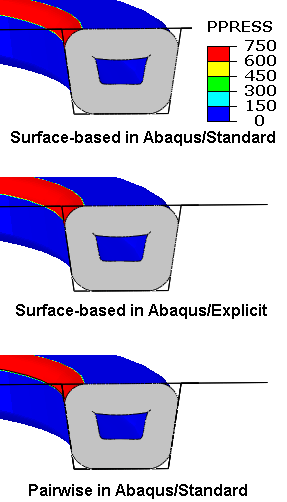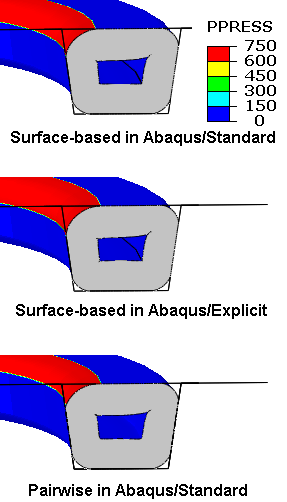Fluid pressure penetration surface loading with general contact | ||
| ||
Products Abaqus/Standard Abaqus/Explicit
A new method of applying fluid pressure penetration loads as surface loads that considers the contact pressure field arising from general contact is available. This method provides more generality and ease of use than the previously available method in which fluid pressure penetration loads are applied pairwise in concurrence with contact pairs. A new distributed surface load type, PPEN, is used to model fluid pressure loads, similar to other distributed surface loading options, so that changes across steps and time variations in fluid pressure follow the same usage patterns as other load types. Unlike the preexisting method, this method does not require matching surface names in contact definitions and load definitions and does not require user specification of the main-secondary roles. In addition, the new method is available in both Abaqus/Standard and Abaqus/Explicit, while the preexisting method is available only for Abaqus/Standard.
Figure 1 and Figure 2 show initial and final extents of surface area exposed to fluid pressure for three variants of an axisymmetric O-ring seal simulation. The O-ring is compressed into a cavity between analytical rigid surfaces prior to the introduction of fluid pressure penetration loading in the top-left corner of the cavity. The first two cases shown in these figures use this new capability in Abaqus/Standard and Abaqus/Explicit, respectively. The third case corresponds to the preexisting capability. These three simulations provide similar results. This example is also discussed in Fluid Pressure Penetration Loads and Fluid pressure penetration analysis of an O-ring seal of a pipe connection.


Abaqus Example Problems Guide
Abaqus Keywords Guide
Abaqus Prescribed Conditions Guide